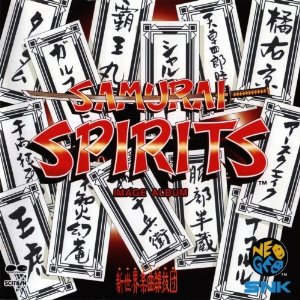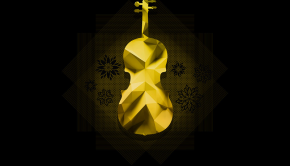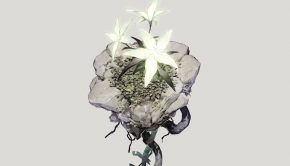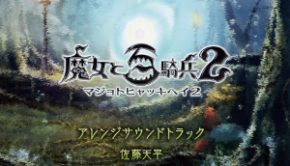Samurai Shodown Image Album
 |
Album Title: Samurai Shodown Image Album (Samurai Spirits Image Album) |
| Record Label: Pony Canyon |
|
| Catalog No.: PCCB-00147 |
|
| Release Date: February 18, 1994 |
|
| Purchase: Buy Used Album |
Overview
SNK’s close relationship with record label Pony Canyon provided the opportunity for original scores and arranged albums to be released for most of their fighting games. Free from the the technological and other restrictions of creating in-game music, the company’s composers often flourished when creating arranged albums. This was particularly true for Yasuo Yamate (aka Tate-Norio), who embraced the opportunity to rearrange his experimental score for Samurai Shodown for live instrumentalists.
Body
The score for Samurai Shodown was defined by tracks written for traditional Japanese instruments that, while moody and pioneering, were generally too sparse and monotonous for stand-alone listening. Yamate maintains the same stylistic approach on the Samurai Shodown Image Album, while expanding and refining his ideas. For instance, he integrates the themes for Haohmaru and Ukyo into a much more polished track, entitled “Song of Men”. To maintain an authentic but personal sound, he carefully considers the flow of the arrangement and centres the arrangement on just three instrumental performances — Shigeyasu Fujisaki’s flute, Kozo Kifuji’s shamisen, and Hiroshige Nishikawa’s taiko. While thin in texture, the arrangement is a tapestry of colour and emotions thanks to the distinctive tones of the instruments and the expressive yet understated arrangement.
Plenty of other additions on the album expand upon this sound to even better results. The darker, minimalistic sounds of Jubei Yagyu’s “Bamboo Thicket” transitions fluidly into a transient but beautiful rendition of the Hanzo Hattori’s “Shadow”. Whereas the originals were more sound design than music, these versions place an emphasis on one of Japan’s most distinctive and beautiful instruments, the shakuhachi. The performance is both striking and subtle — the overblown note of the former at 2:12 serving as a prelude for the deeper, breathier sounds to emerge in the shadow. But not all the tracks written in this style are welcome. “Curved Earrings” provides a further display of inspired arrangement and performance, but doesn’t substantially add to the direction of the second half of the image album, while “Demon” reminds one of the worse aspects of the original score with its repetitive taiko drumming and sampled chanting.
However, the most lavish additions to Samurai Shodown‘s arranged album are those that explore classically-oriented stylings. Wan-Fu’s “King Tiger” is a beautiful Romantic miniature for violin and piano; the esteemed soloists Masatsugu Shinozaki and Yasuo Sako bring so much passion and tragedy to the piece, while still maintaining the Chinese influence of the original. It doesn’t fit the stereotypical character well, but it’s a fantastic addition to the album. Demonstrating Yamate’s understanding of the Baroque genre, “Foreign Woman” is a chorale prelude written for church organ. While it had the potential to be an overblown cliché, the writing and performance are rich enough for it to be a major highlight. The arranger even goes some way to rescuing the wretched final battle theme “Darkness”, offering a grandiose operatic orchestration realized with top-quality samples. It’s a pity that the featured motifs are still generic, though the track is still offers a stirking finale to the album.
Of course, this release wouldn’t be an SNK album if it didn’t feature some more contemporary arrangements. Their rock sound is back in top form with the themes for the title’s American characters, the breezy “Tuna” for Galford and the rumbling “Earth” for Earthquake. All the bends and improvisations on the former make the melody more interesting, while the latter is a dazzling display of electric guitarist Takashi Masuzaki’s mastery. Somehow Yamate avoided the pitfall of these tracks being jarring interruptions and ensured they were refreshing interludes instead. When topped off by the uplifting, hummable “Banquet of Nature” and wild, percussive “Foreigner”, the final album captures the diversity of its cast, without losing a sense of the setting. The arrangement of the staff roll theme resolves the tension underlying the album and ties together the stylistic threads by successfully blending contemporary and traditional flavours.
Summary
An album like this serves as a prominent reminder that SNK’s sound team were much more than just a rocking powerhouse. While there are a few tracks that revisit their seminal sound, there are also incredibly artistic tracks that explore traditional and classical stylings. The majority of the arrangements are wonderfully produced, while the instrumental performances breathe personality and emotion throughout the release. This album is one of SNK’s very best.
Do you agree with the review and score? Let us know in the comments below!
4
Posted on April 9, 2014 by Chris Greening. Last modified on April 9, 2014.














